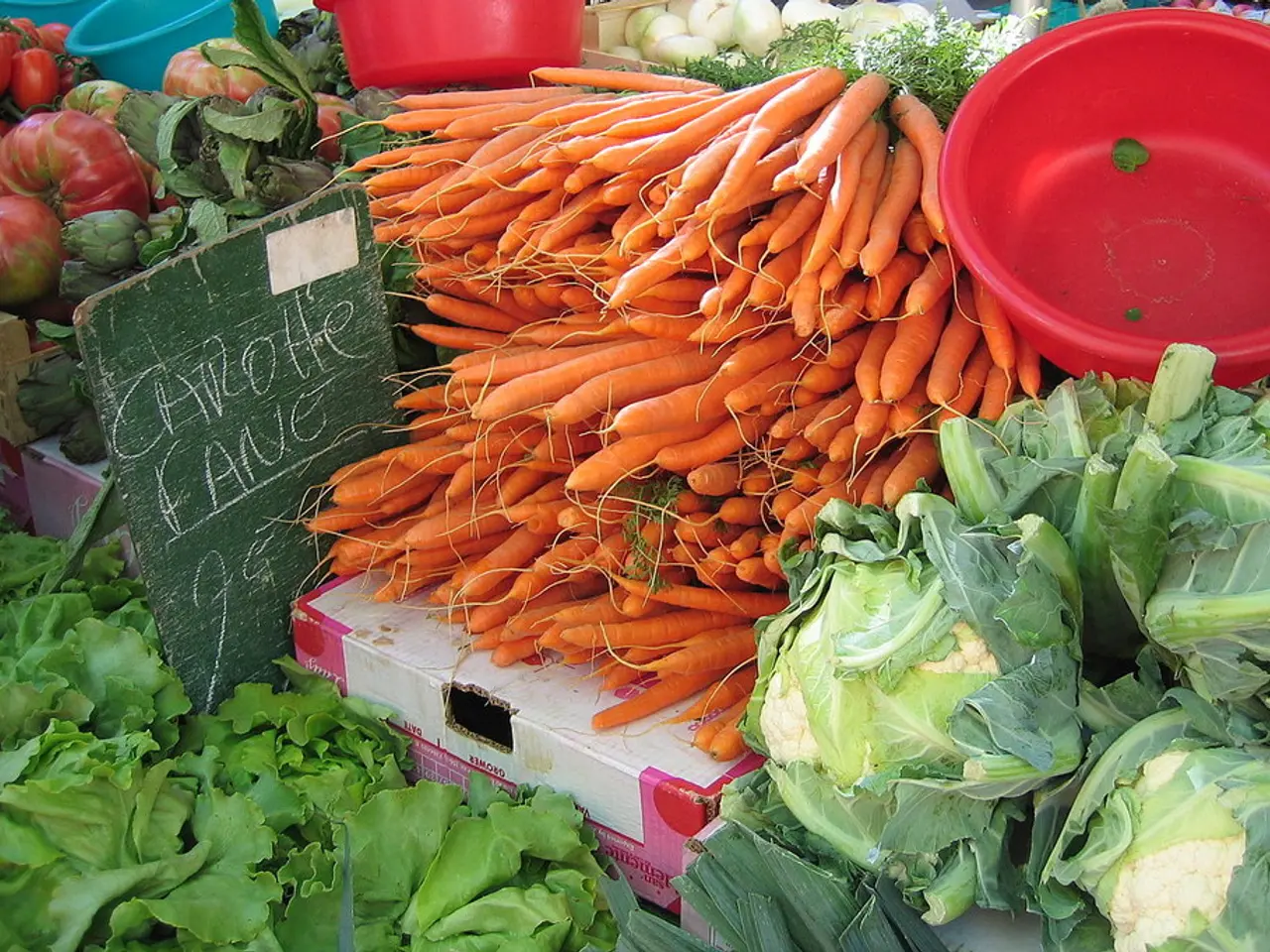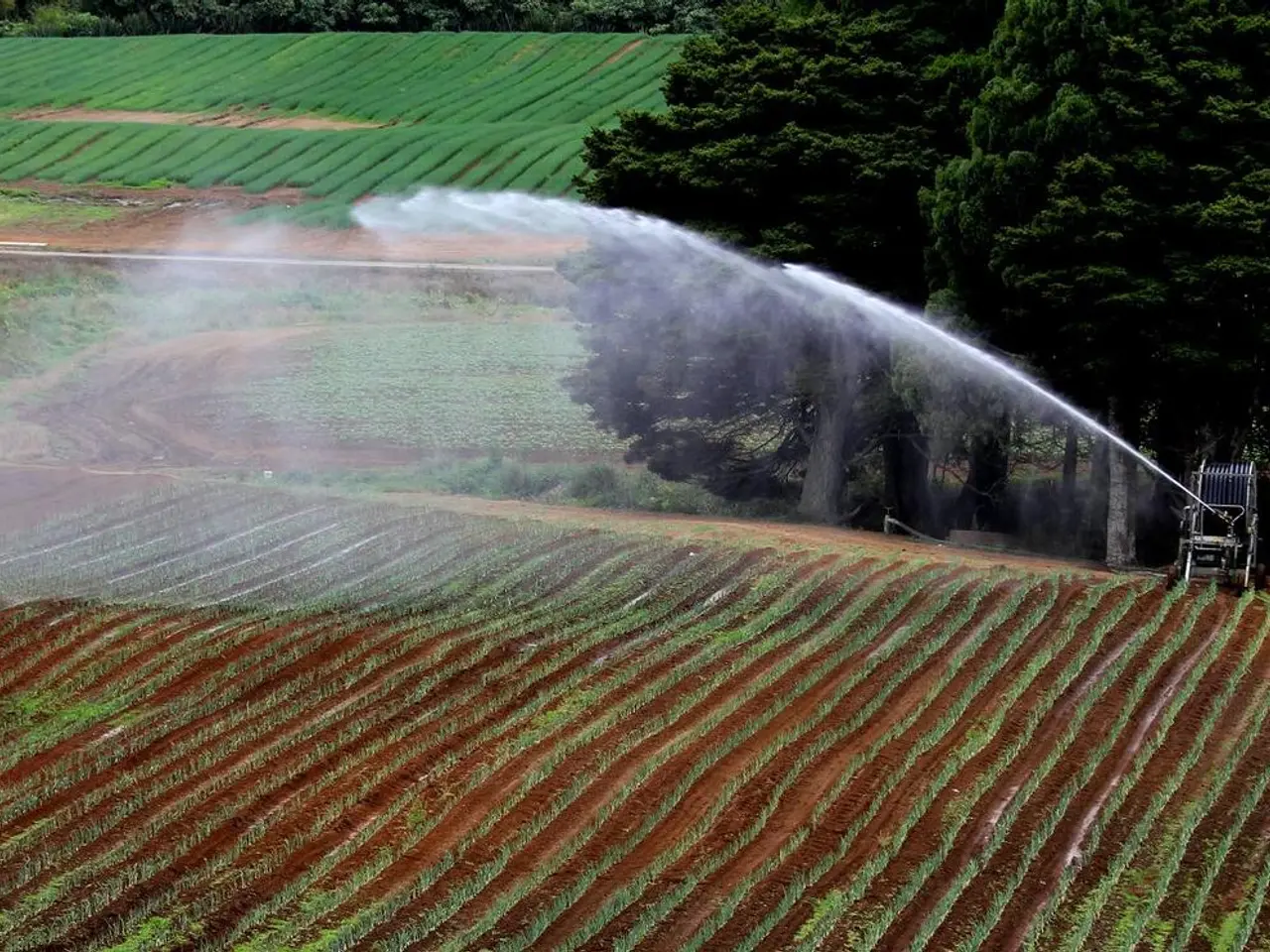August: Time to Harvest Your Garden's Edibles
As August arrives, the veggie patch and garden are bursting with life, with an array of fruits, vegetables, and herbs reaching maturity. Here's a comprehensive guide to help you care for and harvest these August delights.
**August Fruits: Care and Harvest**
**Strawberries** To ensure a bountiful strawberry harvest, maintain good air circulation by spacing plants adequately and mulching with straw. Avoid overwatering to prevent fruit rot and check plants for pests and disease. Remember to remove spent flower stalks from June-bearing varieties to redirect energy to fruit production. Pick strawberries when fully red, with green caps still attached, and harvest regularly to encourage new fruit set and prevent spoilage.
**Raspberries** Caring for summer-fruiting raspberries involves pruning after harvest by cutting out the old canes that have fruited. Keep soil moist but not waterlogged, and mulch around plants to retain moisture and control weeds. Monitor for cane borers and fungal diseases. Harvest raspberries when they are deep in color and easily pull away from the core, picking every few days to keep up with the ripening fruit.
**Other Fruits** August is not the best month to plant fruit, as weather is often hot and dry. Focus on maintaining and harvesting existing plants.
**August Vegetables and Herbs: Care and Harvest**
**Squash (including Summer Squash and Courgettes)** Keep soil consistently moist but well-drained for squash plants. Mulch around them to retain moisture and prevent weeds. Watch for powdery mildew and cucumber beetles, and remove any diseased foliage promptly. Pick summer squash and courgettes when they are small and tender (typically 4-6 inches long). Regular harvesting encourages more production. Use a knife or pruners to avoid damaging the plant.
**Tomatoes** Water tomato plants at the base to keep foliage dry and prevent disease. Support them with stakes or cages. Remove suckers and yellowing leaves to improve air circulation. Watch for blight and pests such as hornworms. Pick tomatoes when fully colored and slightly soft to the touch. Harvest green tomatoes at the end of the season if frost threatens.
**Herbs (Basil, Parsley, etc.)** Pinch back herbs to encourage bushiness and prevent bolting (flowering and seeding). Keep soil consistently moist for leafy herbs. Provide afternoon shade if temperatures are very high. Snip leaves as needed, preferably in the morning for best flavor. Avoid taking more than a third of the plant at once.
**Lettuce** Plant lettuce in partial shade or provide shade cloth to prevent bolting in hot weather. Keep soil consistently moist. Use row covers to protect from pests. Pick outer leaves regularly for a continuous harvest, or cut the whole head at ground level when mature.
**Additional Tips**
- Sow spinach, oriental leaves (e.g., mizuna, mibuna), and rocket in late August for autumn and winter harvests. Direct sow in fertile soil, water during hot spells, and cover with cloches as temperatures drop. - Sow kale and winter cabbage in July–August for harvest throughout winter and spring. Space plants well and protect from pests with netting.
**Summary Table**
| Crop | Care Tips | Harvest Tips | |-------------------|------------------------------------------------|--------------------------------------| | Strawberries | Mulch, space, remove spent stalks | Pick when fully red | | Raspberries | Prune after fruiting, mulch, monitor pests | Pick when deep in color, regular | | Squash/Courgettes | Mulch, consistent moisture, watch disease | Harvest small, use knife | | Tomatoes | Water at base, support, remove suckers | Pick when colored, slightly soft | | Herbs | Pinch back, moist soil, shade if hot | Snip leaves as needed | | Lettuce | Shade, moist soil, row covers | Pick outer leaves or whole head |
By following these guidelines, you can maximize your August harvest and set the stage for continued productivity into autumn and winter. Enjoy your homegrown fruits, vegetables, and herbs!
Sources: [1] The RHS Vegetable Plants for Every Garden, 2020 [2] The RHS Complete Guide to Fruit and Vegetables, 2019 [3] The RHS Vegetable Garden, 2019 [4] The RHS Guide to Growing Herbs, 2018
Incorporate some home-and-garden elements into your August lifestyle by focusing on caring for and harvesting your homegrown fruits, vegetables, and herbs. Consider adding a vegetable patch or small garden space if you don't have one already, as it can provide an abundance of fresh produce for your meals.




